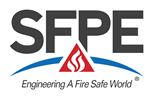FEMTC 2014
Optimization of Smoke Ventilation Strategy in a Typical Underground Metro Station Fire 
Muhammad Sontoso - Fire Safety Engineering Research Group, Universitas Indonesia
Abstract
Compartment fire is an unwanted event that needs to be accessed carefully in order to ensure the safety of occupants and structures. This study emphasizes on fire and smoke spreads in a typical underground metro station. Underground metro station usually has a geometry that will direct smoke in the same direction as the evacuation course. Thus, to secure safety of the passengers, the rate of the smoke spread and stratification should be reduces by well designed smoke ventilation systems. This paper examines the performance of ventilation configurations proposed for a typical underground metro station design. The study was carried out by using numerical model of Fire Dynamics Simulator version 6.0 and fire test in 1:25 bench scale of a typical metro underground station. Three ventilation configurations will be provided in this paper namely, mechanical ventilation, natural ventilation, and hybrid ventilation. The objective of this study is to formulate ventilation strategies in order to optimize the smoke handling capacity for lengthening the available safe egress time (ASET) during a fire event in a typical underground metro station. The discussion will also include the effect of hybrid ventilation on the occurrence of the pulsating phenomenon of smoke flow.
Presentation
Resources
| Paper | Presentation | ||
|---|---|---|---|
| HTML | HTML | ||
| Resources Archive File (.zip) | |||

